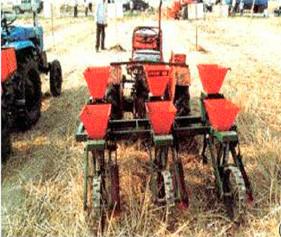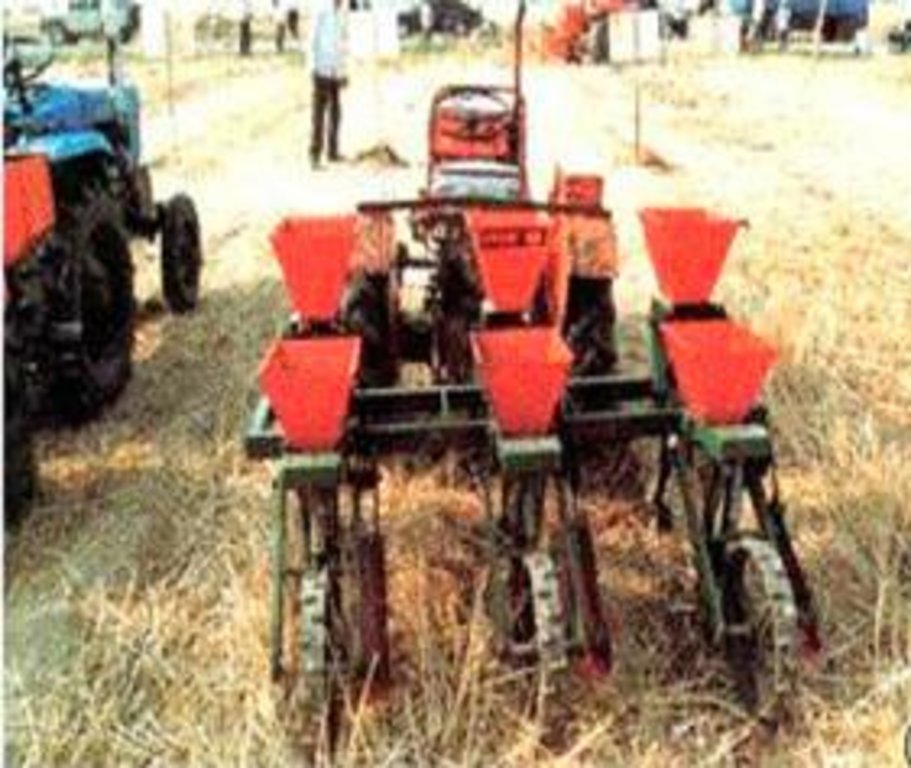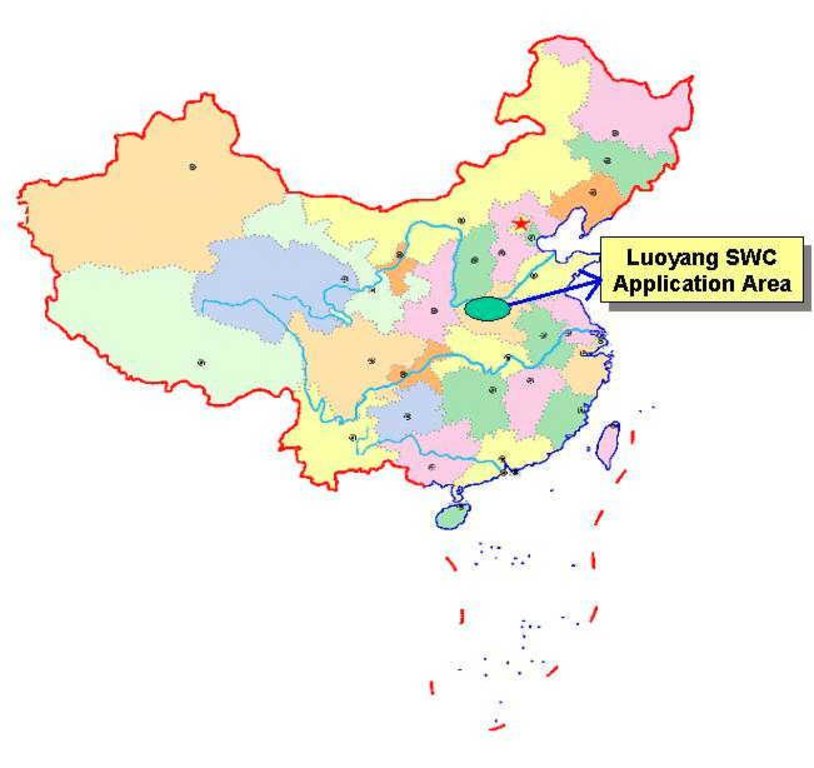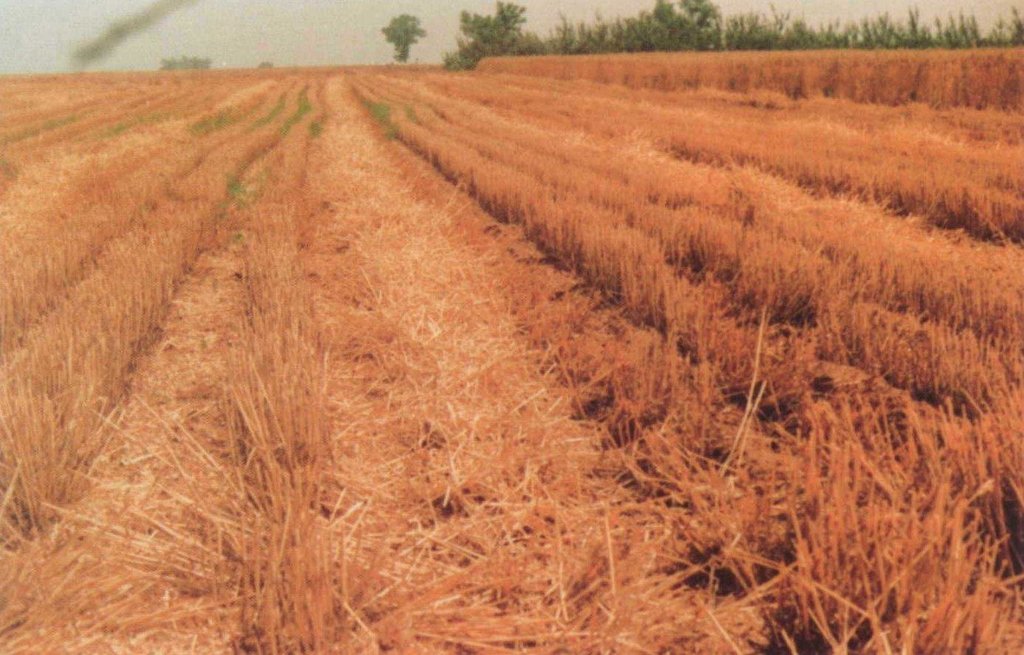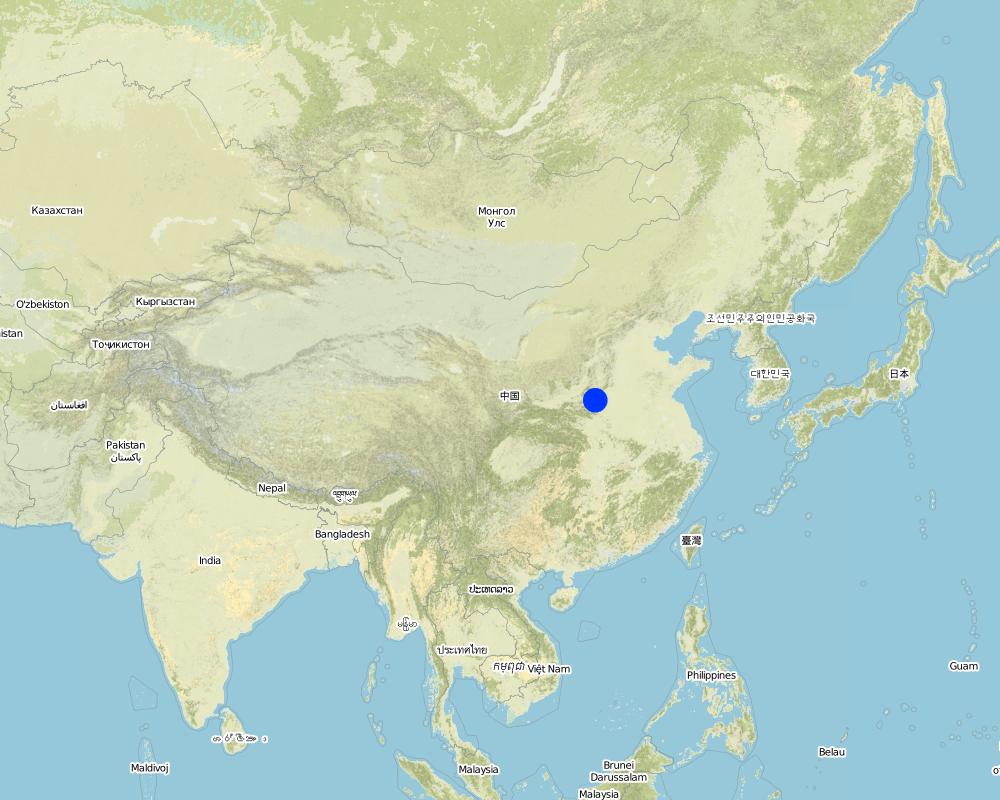Zero Tillage [China]
- Creación:
- Actualización:
- Compilador: Zhanguo Bai
- Editor: –
- Revisor: Laura Ebneter
approaches_2411 - China
Visualizar secciones
Expandir todo Colapsar todos1. Información general
1.2 Detalles de contacto de las personas de referencia e instituciones involucradas en la evaluación y la documentación del Enfoque
Especialista MST:
Wang Deshui
(8610) 68918672
Institute of Soil & Fertilizer, Chinese Academy of Agricultural Sciences (CAAS)
12 zhong guan cun south street, Beijing 100081, P.R. of China
China
Nombre de la(s) institución(es) que facilitaron la documentación/ evaluación del Enfoque si fuera relevante)
Institute of Agricultural Resources and Regional Planning of Chinese Academy of Agricultural Sciences (CAAS) - China1.3 Condiciones referidas al uso de datos documentados mediante WOCAT
El compilador y la/s persona(s) de referencia claves aceptan las condiciones acerca del uso de los datos documentados mediante WOCAT :
Sí
1.4 Referencia/s al/los Cuestionario(s) de Tecnologías MST
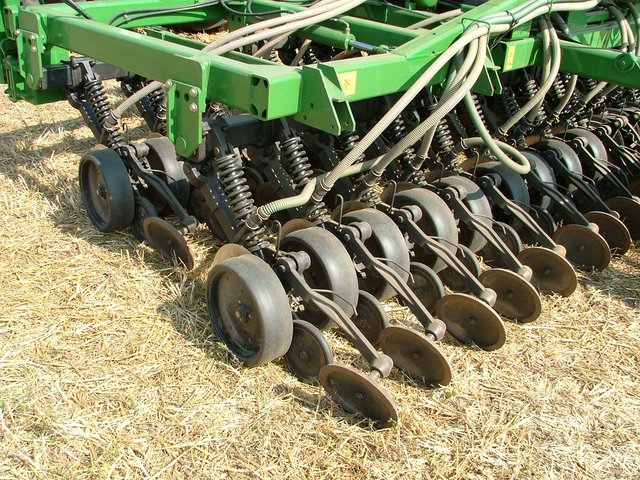
No-till agriculture [Hungría]
No-till agriculture replaces conventional soil tillage in order to reduce costs and labour - and to provide a mulch layer on the soil surface from the residues of the previous crop: this protects the soil surface and its ecology.
- Compilador: Brigitta Szabó
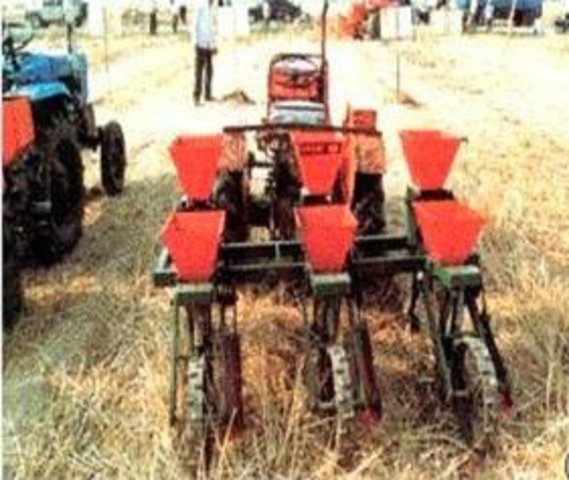
Zero Tillage [China]
Zero tillage technology was developed to protect the soils from sealing rainfall, to achieve and maintain a open internal soil structure, to enhance biological processes in the soil, and to develop a means for safe disposal of any surface runoff that nevertheless will occur.
- Compilador: Zhanguo Bai
2. Descripción del Enfoque MST
2.1 Breve descripción del Enfoque
Zero tillage approach was developed to protect the soils from sealing rainfall, to achieve and maintain a open internal soil structure, to enhance biological processes in the soil, and to develop a means for safe disposal of any surface runoff that nevertheless will occur.
2.2 Descripción detallada del Enfoque MST
Descripción detallada del Enfoque MST:
Sustainable agriculture in the dry and semidry regions in the north China, especially on the slope farmland is searching always based on the ecological balance. Conservative tillage such as zero, reduced and subsoiling tillage are important to keep soil fertility. Mulching is also a way to improve the soil organic matter. So no tillage with mulching is an approach to do this. No tillage lets all rainfall in the soils and avoid runoff occur.
2.3 Fotos del Enfoque
2.5 País/ región/ lugares donde el Enfoque fue aplicado
País:
China
Región/ Estado/ Provincia:
Henan province
Map
×2.6 Fechas de inicio y conclusión del Enfoque
Indique año del inicio:
1995
Año de conclusión (si el Enfoque ya no se aplica):
2003
2.7 Tipo de Enfoque
- proyecto/ basado en un programa
2.8 Propósitos/ objetivos principales del Enfoque
The Approach focused mainly on SLM with other activities (Reduction of dust devil that occur in North China.)
The main objectives of the approach is to apply conservation tillage for sustainable agricultural development.
The SLM Approach addressed the following problems: Traditional tillage (multi-till) with little return of organic matters to soils results in soil fertility decline and nutrient loss as well as yield decrease. This approach is designed to change the traditional cultivation ways to conservation tillage.
2.9 Condiciones que facilitan o impiden la implementación de la/s Tecnología/s aplicadas bajo el Enfoque
disponibilidad/ acceso a recursos y servicios financieros
- impiden
buying no till machine and tractor
Treatment through the SLM Approach: subsidy and adjust crop planting pattern
marco de trabajo legal (tenencia de tierra, derechos de uso de tierra y agua)
- facilitan
The existing land ownership, land use rights / water rights helped a little the approach implementation: Because land ownership belongs to state and land users can only lease land.
conocimiento de MST, acceso a apoyo técnico
- impiden
organizing subdivided householders together
3. Participación y roles de las partes interesadas involucradas
3.1 Partes interesadas involucradas en el Enfoque y sus roles
- usuarios locales de tierras/ comunidades locales
Work equally divided between men and women (experimental areas selected on the basis of the landforms, contributed to diff, households). Householders organized by local committee or by implementation
- especialistas MST/consejeros agrícolas
- profesores/ niños en edad escolar/ estudiantes
- gobierno nacional (planificadores, autoridades)
3.2 Involucramiento de los usuarios locales de tierras/ comunidades locales en las distintas fases del Enfoque
| Involucramiento de los usuarios locales de tierras/ comunidades locales | Especifique quién se involucró y describa las actividades | |
|---|---|---|
| iniciación/ motivación | pasivo | Mainly:interviews/questionnaires; partly: public meetings; Generally local and/or village committee call land users who involved in the SWC project together and illustrate the purpose and obligation. |
| planificación | apoyo externo | rapid/participatory rural appraisal; Detailed planning are addressed to whose who take part in the activities. |
| implementación | interactivo | responsibility for minor steps; Each step and procedures are guided and checked for implementation. |
| monitoreo y evaluación | pasivo | measurements/observations; Mainly done by the researchers and local government staffs not by local land users. |
| Research | interactivo | on-station; The effect and impacts of the SWC technology on the soil and environment are investigated and studied on experimental station and on farm. |
3.4 La toma de decisiones en la selección de Tecnología(s) MST
Especifique quién decidió la selección de las Tecnología/ Tecnologías a implementarse:
- por políticos/ líderes
Explique:
Decisions on the choice of SLM Technology were made directive (top-down).
Decisions on the method of implementing the SLM Technology were made mainly by SLM specialists with consultation of land users.
4. Apoyo técnico, fortalecimiento institucional y gestión del conocimiento
4.1 Construcción de capacidades / capacitación
¿Se proporcionó la capacitación a usuarios de tierras/ otras partes interesadas?
Sí
Especifique quién fue capacitado:
- usuarios de tierras
- SWC specialists, extensionists/trainers
Forma de capacitación:
- de agricultor a agricultor
- áreas de demostración
- reuniones públicas
- cursos
Temas avanzados:
Teaching them how to operate tractor/tillage with mulching residuals and fertilizing as well as seeding; to understand the importance of the roles of the SWC etc.
4.2 Servicio de asesoría
¿Los usuarios de tierras tienen acceso a un servicio de asesoría?
Sí
Especifique si servicio proporcionado se realizó:
- en los campos de los usuarios de tierras
Describa/ comentarios:
Name of method used for advisory service: In situ demonstration and training; Key elements: Demonstration, Training, farmer visit; 1) Advisory service was carried out through: government's existing extension system, projects own extension structure and agents 2) Advisory service was carried out through: government's existing extension system, projects own extension structure and agents; Extension staff: mainly government employees 3) Target groups for extension: land users; Activities: Demonstration, training
Advisory service is quite adequate to ensure the continuation of land conservation activities; Top-down agricultural/SWC technology extension service system has been established at variable government levels, they have capability of extension all kinds of the new techniques.
4.3 Fortalecimiento institucional (desarrollo institucional)
¿Se establecieron o fortalecieron instituciones mediante el Enfoque?
- sí, mucho
Especifique el nivel o los niveles en los que se fortalecieron o establecieron las instituciones:
- local
Especifique el tipo de apoyo:
- financiero
- construcción de capacidades/ entrenamiento
- equipo
4.4 Monitoreo y evaluación
¿El monitoreo y la evaluación forman parte del Enfoque?
Sí
Comentarios:
bio-physical aspects were regular monitored through measurements
technical aspects were regular monitored through measurements
land users involved aspects were regular monitored through observations
There were few changes in the Approach as a result of monitoring and evaluation
4.5 Investigación
¿La investigación formó parte del Enfoque?
Sí
Especifique los temas:
- ecología
- tecnología
Proporcione detalles adicionales e indique quién hizo la investigación:
The successful results of the SWC study obtained by the SWC approach are widely applied to the control of the dust devil, and ecological recover. Research was carried out both on station and on-farm
5. Financiamiento y apoyo material externo
5.1 Presupuesto anual para el componente MST del Enfoque
Si no se conoce el presupuesto anual preciso, indique el rango:
- 100,000-1,000,000
Comentarios (ej. fuentes principales de financiamiento/ donantes principales):
Approach costs were met by the following donors: local community / land user(s) (National - Central government): 30.0%; government: 60.0%; international: 5.0%; other: 5.0%
5.3 Subsidios para insumos específicos (incluyendo mano de obra)
- equipo
| Especifique qué insumos se subsidiaron | En qué grado | Especifique los subsidios |
|---|---|---|
| maquinaria | parcialmente financiado | |
- agrícola
| Especifique qué insumos se subsidiaron | En qué grado | Especifique los subsidios |
|---|---|---|
| fertilizantes | parcialmente financiado | |
- infraestructura
| Especifique qué insumos se subsidiaron | En qué grado | Especifique los subsidios |
|---|---|---|
| community infrastructure | parcialmente financiado | |
Si la mano de obra de usuarios de tierras fue un insumo sustancial, ¿fue:
- voluntario?
Comentarios:
Labour was voluntary, paid in cash and rewarded with other material support.
In the past (before 1980's), SWC activities are mainly done by community members through obligation. Nowadays under the conditions of economic market, people unwill to do this voluntary, they concern return of their input for SWC.
5.4 Crédito
¿Se proporcionó crédito bajo el Enfoque para actividades MST?
Sí
Especifique las condiciones (tasa de interés el apoyo, amortización, etc.):
Interest rate charged: 2.3%; repayment conditions: After 2 to 5 years when SWC produces benefits, loaner should repay.
Interest was lower than market rate.
6. Análisis de impacto y comentarios de conclusión
6.1 Impactos del Enfoque
¿El Enfoque ayudó a los usuarios de tierras a implementar y mantener Tecnologías MST?
- No
- Sí, un poco
- Sí, moderadamente
- Sí, mucho
Soil & water loss reduced much and soil fertility is greatly improved with increase in yield.
¿El Enfoque mejoró cuestiones de tenencia de tierra/ derechos de usuarios que obstaculizaron la implementación de la Tecnologías MST?
- No
- Sí, un poco
- Sí, moderadamente
- Sí, mucho
Subdivision and lease of the land would hinder SWC implementation. The problem is likely to be overcome in the near future. Farmers worry that their land would transfer to others, well organizing could reduce the negative impact through prolong the lease period of land use.
Did other land users / projects adopt the Approach?
- No
- Sí, un poco
- Sí, moderadamente
- Sí, mucho
6.3 Sostenibilidad de las actividades del Enfoque
¿Pueden los usuarios de tierras sostener lo que se implementó mediante el Enfoque (sin apoyo externo)?
- sí
6.4 Fortalezas/ ventajas del Enfoque
| Fuerzas/ ventajas/ oportunidades desde la perspectiva del usuario de la tierra |
|---|
| Raising yield and soil moisture as well as fertility. (How to sustain/ enhance this strength: Leaving high residual straw and cover soil surface.) |
| Fuerzas/ ventajas/ oportunidades desde la perspectiva del compilador o de otra persona de referencia clave |
|---|
| Practical (How to sustain/ enhance this strength: Financial support from various government) |
| Very welcome by farmers. Great economic and ecological benefits (How to sustain/ enhance this strength: enlarging extension) |
6.5 Debilidades/ desventajas del Enfoque y formas de sobreponerse a ellos
| Debilidades/ desventajas/ riesgos desde la perspectiva del usuario de la tierra | ¿Cómo sobreponerse a ellas? |
|---|---|
| Shortage of finance | Raising money |
| Debilidades/ desventajas/ riesgos desde la perspectiva del compilador o de otra persona de referencia clave | ¿Cómo sobreponerse a ellas? |
|---|---|
| Hard to widely extension due to expensive tillage machinery | Government should financially support |
7. Referencias y vínculos
7.1 Métodos/ fuentes de información
- visitas de campo, encuestas de campo
- entrevistas con usuarios de tierras
7.2 Referencias a publicaciones disponibles
Título, autor, año, ISBN:
Report of ninth-Five plan project on Dryland Farming, Jan 2002,
¿Dónde se halla disponible? ¿Costo?
internal reference
Título, autor, año, ISBN:
Introduction of Luoayng physicography
¿Dónde se halla disponible? ¿Costo?
unpublished materials
Título, autor, año, ISBN:
No-till farming for sustainable rural development, 2002
¿Dónde se halla disponible? ¿Costo?
World Bank
Título, autor, año, ISBN:
A road map from conventional to no-till farming, 2002
¿Dónde se halla disponible? ¿Costo?
World Bank
Título, autor, año, ISBN:
Conservation agriculture, 2001
¿Dónde se halla disponible? ¿Costo?
FAO
Vínculos y módulos
Expandir todo Colapsar todosVínculos

No-till agriculture [Hungría]
No-till agriculture replaces conventional soil tillage in order to reduce costs and labour - and to provide a mulch layer on the soil surface from the residues of the previous crop: this protects the soil surface and its ecology.
- Compilador: Brigitta Szabó

Zero Tillage [China]
Zero tillage technology was developed to protect the soils from sealing rainfall, to achieve and maintain a open internal soil structure, to enhance biological processes in the soil, and to develop a means for safe disposal of any surface runoff that nevertheless will occur.
- Compilador: Zhanguo Bai
Módulos
No se hallaron módulos


